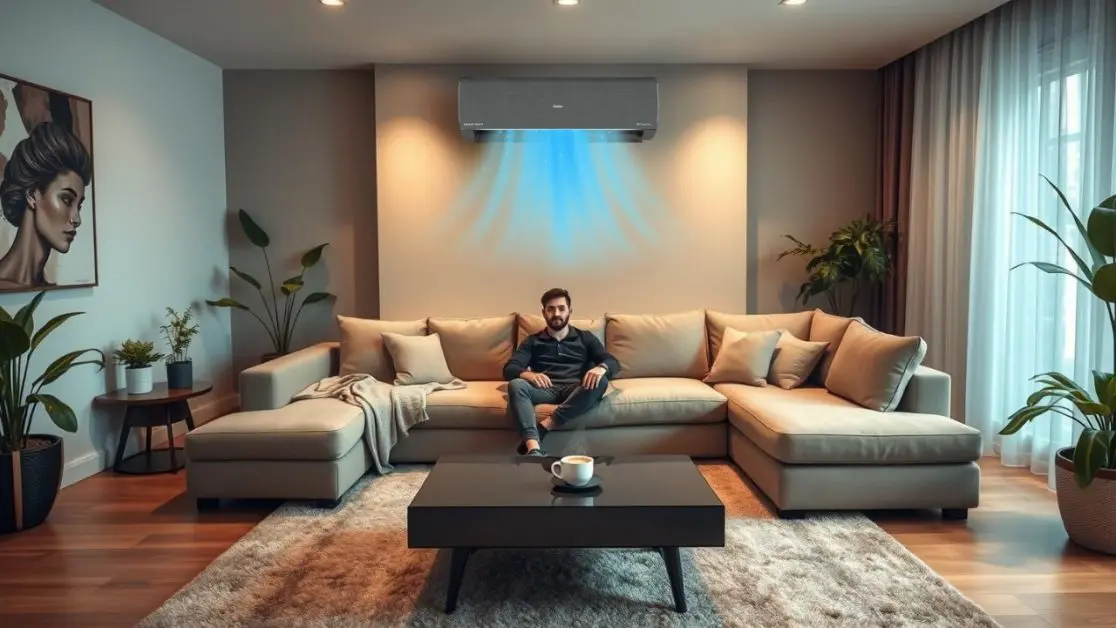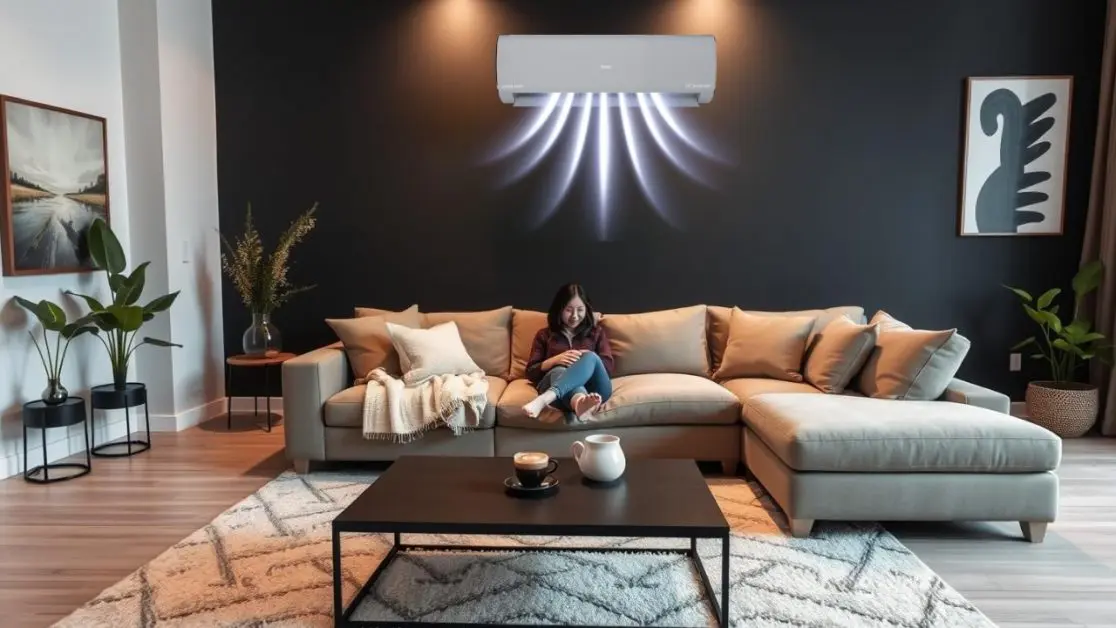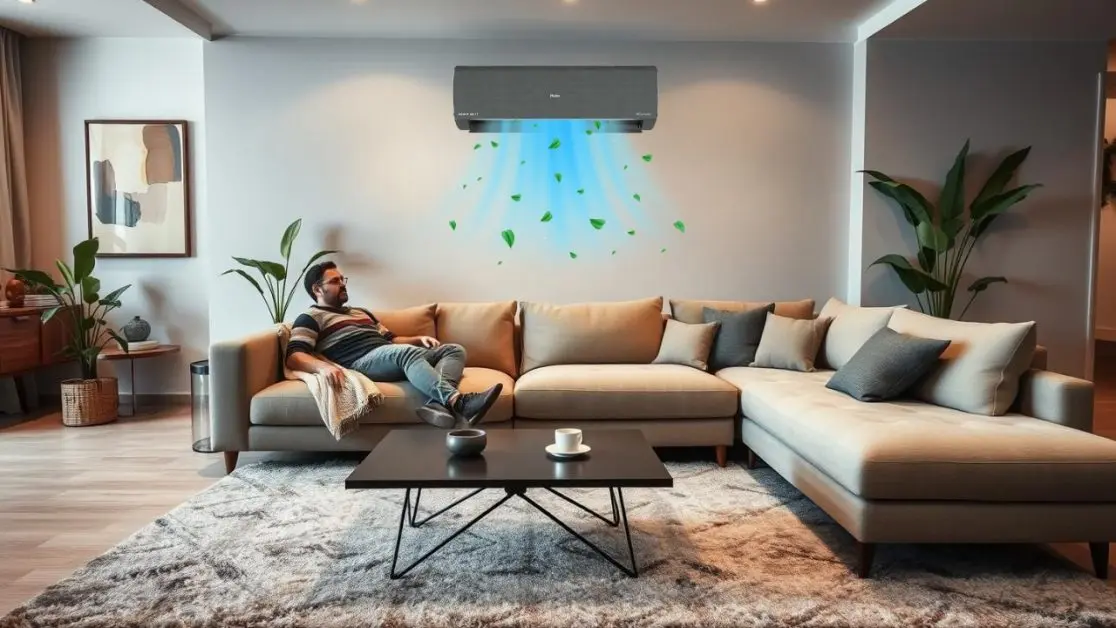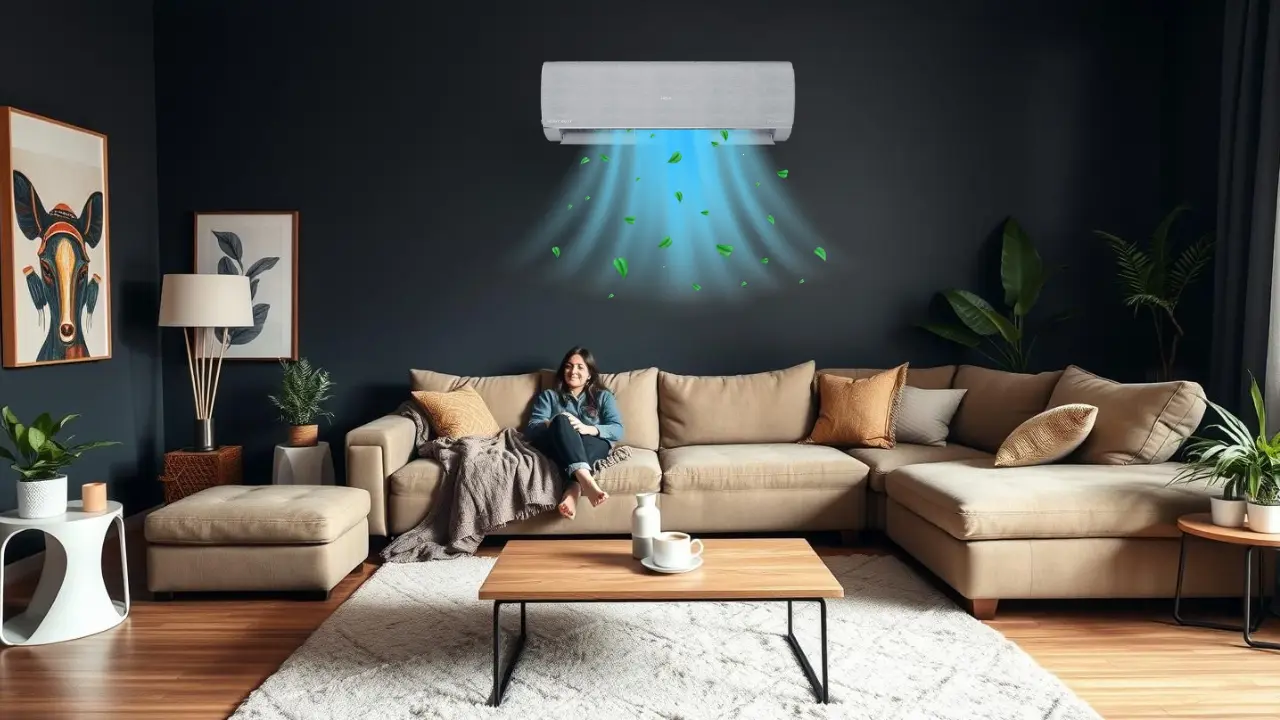For Indian residents, especially during peak summertime, your air conditioning unit not powering on is a common occurrence. Most of the time, it is not the machine that is malfunctioning, but rather the supply voltage it is receiving.
Places like Lucknow Ranchi and some Delhi NCR suburbs are known for unreliable network of electricity. There are times when the electricity supply is delivered at a lower voltage and while your light bulbs are functioning, your air conditioner remains unresponsive. That’s infuriating.
And if your air conditioner dares to turn on, it would be low on refrigerant, make weird noisy sounds, or end up drawing excessive power. This is painful and AC units are expensive to service.
But here’s the good part. Life doesn’t need to be hard like that. It’s not just about buying a stabilizer; there are smarter ways to make your AC work better in these situations. The best AC units today come equipped with smart technologies that take care of voltage dips automatically. And if you’re already using one, there are ways to optimize your power consumption even on days with bad electricity supply.
Let’s solve this now.
Why Your AC Runs Better At Higher Voltage

Understanding the underlying issues hot weather poses to your AC can do wonders for your peace of mind.
ACs function within a certain voltage range, which is similar to how car engines operate when fed a specific fuel mixture. Should there be any drop in voltage, your compressor will either not start or endlessly cycle reboot. Such behaviors simultaneously worsen functionality and augment the aging process.
Typical signs of voltage-dependent issues with your AC are:
- Taking longer to cool the room
- Strange auxiliary humming or clicking noises
- Mid-night auto restarts
- Shuts off without notice while other appliances continue functioning
Just to remember, the higher the strain, the higher your electricity bill. That is the part most people miss when their appliances consume power like a vacuum, and their output is anywhere near electricity guzzlers.
Tip 1: Select an AC That Doesn’t Panic In Case There Are Changes In Voltage
Air conditioners don’t all function the same. Some abandon all efforts during voltage dips while others adapt smartly and keep going.
These days, more sophisticated ACs come with smart features like A-PAM Inverter Control which adjusts voltage between 120V to 290V. This is like having a clever engine within the AC that remedies the issues and intelligently manages the current. No need for external stabilizers.
If you live in highly humid or dusty areas, Hyper PCB Is another incredible innovation. It protects the AC’s circuit board from heavy humidity, dust and even during fluctuations in temperature.
An AC giving up in low voltage means the air-conditioner lacks sophisticated features. Don’t think too long, it’s upgrade time!
Tip 2: Use All The Features And Benefits Of Turbo Mode, But Wisely

While most believe Turbo Mode serves as a “show off” button such PC games have, if utilized properly, it can be a helpful feature used during voltage drops.
This is how it goes. The initial phase of powering on the AC requires significantly more power. During low voltage circumstances, that power may not always be accessible. HEXA Inverter Technology, which is incorporated in newer models, uses a feature named Kick Torque Start that aids in the compressor’s functionality during low voltage scenarios.
After enabled, the AC’s Turbo mode can be utilized to quickly reach the desired temperature, allowing the AC to take a break after finishing its job. This is a decrease in workload and energy consumption, making it smart for the device and efficient for the users.
Tip 3: Providing Your AC with a Cleans, Slates Literally
As mentioned previously, voltage may not always be the problem. In these scenarios, the AC unit seems to be working harder than normal, which proves the theory that the unit itself is dirty.
The results from dirt covered dust filters, blocked airways, and moist coils lead to the machine consuming too much energy that it’s unable to manage during low voltage, leading to insufficient cooling or powering off.
This is why Frost Self-Cleaning becomes a revolutionary feature, frost self-cleaning works by freezing the dirt and dust on AC coils and later melting and flushing it out. All it takes is pressing a button, no technician is needed every three months. No longer charging Rs. 2000 servicing fee. Most importantly, your AC is smoother in low voltage situations because less strain is put on the motor.
So yes, a clean AC is a happy AC, particularly when the power supply is unstable.
Tip 4: Use Smart Modes for Improved Balance
People typically operate their AC at either of two extremes: full power or off. This isn’t the best way to utilize contemporary units.
With new models, there is the availability of 7-in-1 Intelli Convertible Modes which lets users adjust cooling from 110% during peak summer to as low as 40% during mild evenings. This isn’t only comfort, it’s control.
Under low-voltage conditions, the existing system may be sustained without overheating by cooling down to 75% or 55%. This helps lower the chances of shutdowns and reduces the stress put on the compressor. Furthermore, it conserves electricity. It is similar to changing gears based on the terrain ahead. Why waste effort on a bumpy road?
This is particularly helpful during:
- Monsoon evenings (75%)
- Children’s bedrooms (55%)
- Winter nights (40%)
Making these small alterations leads to substantial improvements.
Reminder 5: Circulate the Air
This is vital even though it may seem simple. The presence of stagnant air makes it impossible for the AC to function properly, and the problem becomes worse in larger rooms.
Modern indoor units are equipped with long air throw capabilities, meaning they can blow air at distances of twenty meters. Thus, the furthest corner of the hall will still receive air even if the AC is placed on one side.
Additionally, during low-voltage periods, airflow efficiency becomes more important. Well-distributed warm air means the AC compressor doesn’t have to work as hard to deal with uncooled pockets of warm air.
A quiet ceiling fan will help spread the cooled air further without using too much energy.
Tip 6: Keep Saving Settings for Fan Speed and Temperature

Modern air conditioning units have been made with memory settings. Use these features to make your life easier.
Temperature, fan speed, and mode are all customizable and can be set to your liking. The AC unit will store your preferred settings and during power cuts and voltage drops, your unit will have a smoother auto-recovery. Instead of having to restart the thermostat stress cycle, your unit can start from your preferred settings.
AI Climate Control is available on some models which remembers your habits and makes small changes to reduce energy usage. This promotes comfort without drawing a high amperage, reducing the chance of significant energy crashes in poor supply hours later.
Tip 7: Track Your Electricity Usage
One of the most common things people forget to do is track their own consumption.
Modern ACs come with added features like AI ECO Mode that monitor electricity consumption in real time. ACs now have the capability to not only monitor but also reach set monthly targets. The system actively works with the user and when close to the set limit, it serves as a reminder and power consumption is reduced automatically.
This entire process streamlines the monthly electricity bill while helping during voltage drops. The overall performance is more efficient, staying within set targets.
Tip 8: Do not ignore the pumping down procedure

The AC’s inability to cool itself is one of the reasons the lack of voltage low issues continue to persist.
Larger units with optimized fans and heat sinks operate at ambient temperatures of 60°C. This means they do not choke when the outside temperature exceeds 45°C or during direct sunlight on a balcony. Such setups are tailored for India, not showrooms.
If the AC shuts down when there’s sunlight combined with a voltage drop, the unit is likely overheating. Struggling with heat dissipation is a sign that the system needs a more powerful, efficient unit.
Final Thoughts
Having the most efficient air conditioner doesn’t require engineering training when the environment operates on low-voltage, what you need is awareness. Understanding what features matter, when to use the AC, when to switch modes, or how to maintain it helps a lot.
For those considering an air conditioner that can face such challenges without complex peripherals, gadgets or additional arrangements, Haier India’s newest inverter ACs feature effortless adaptability for real operational settings across India. AI adjustments, self-cleaning frost, protective PCB layers, these units are built to function through power fluctuations.
Stay frosty, even during voltage dips.
Check out the complete collection of smart inverter air conditioners by Haier India specially for homes that don’t run on flawless power. They run smart.

